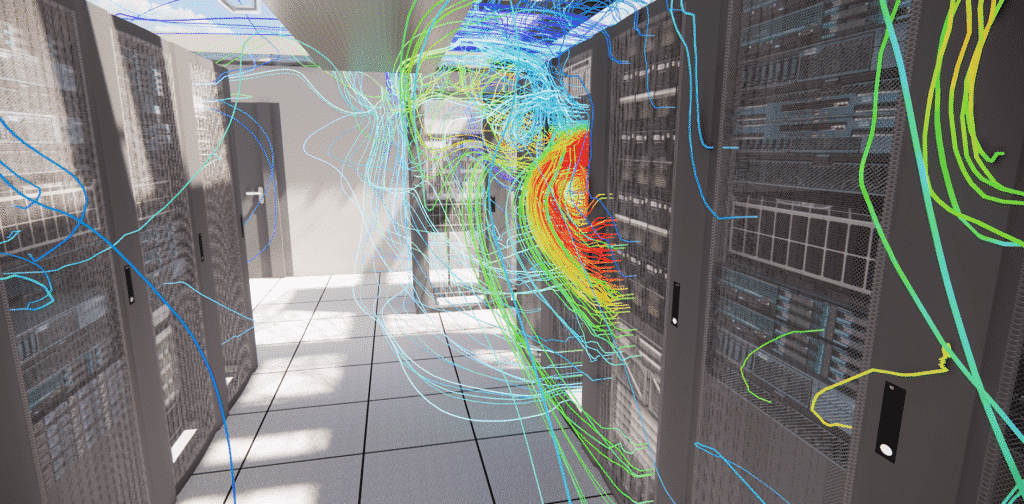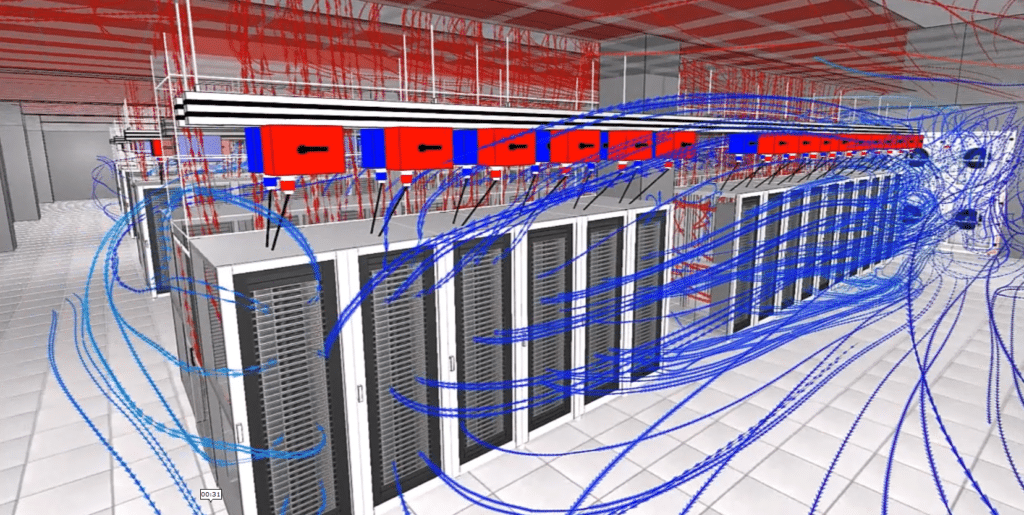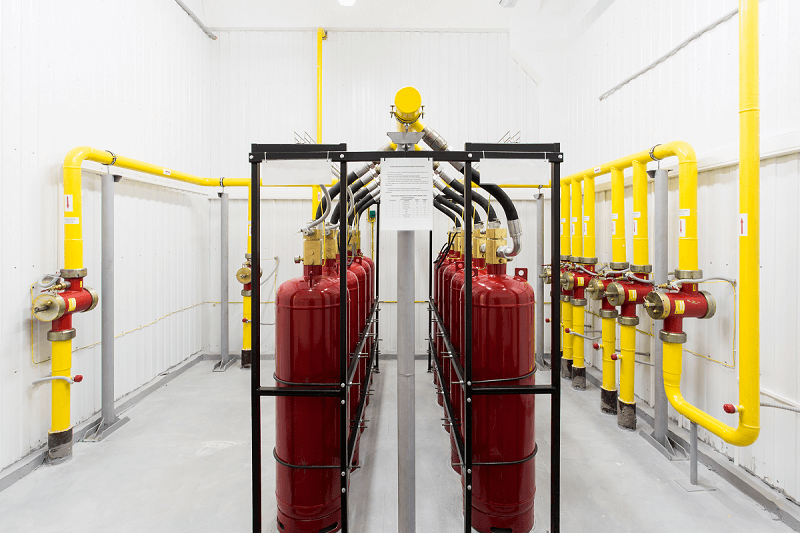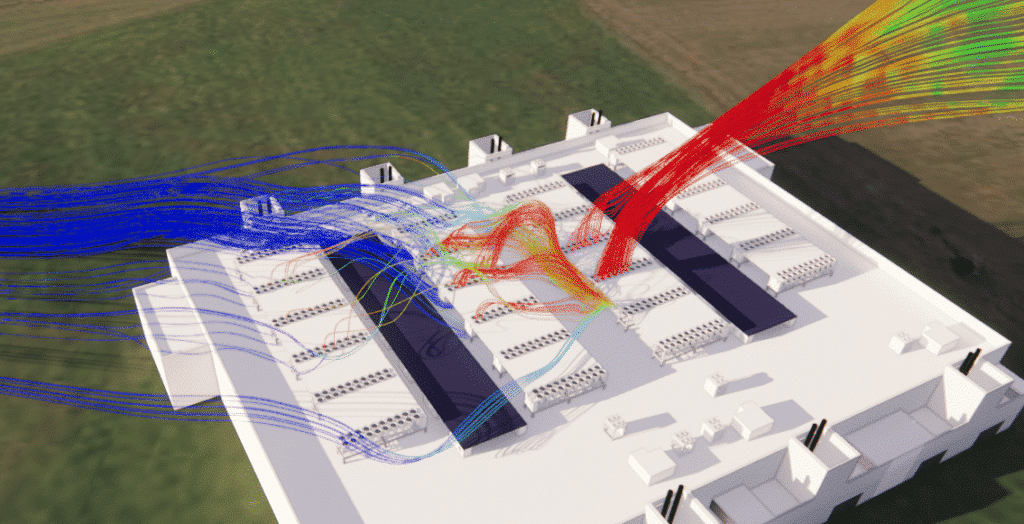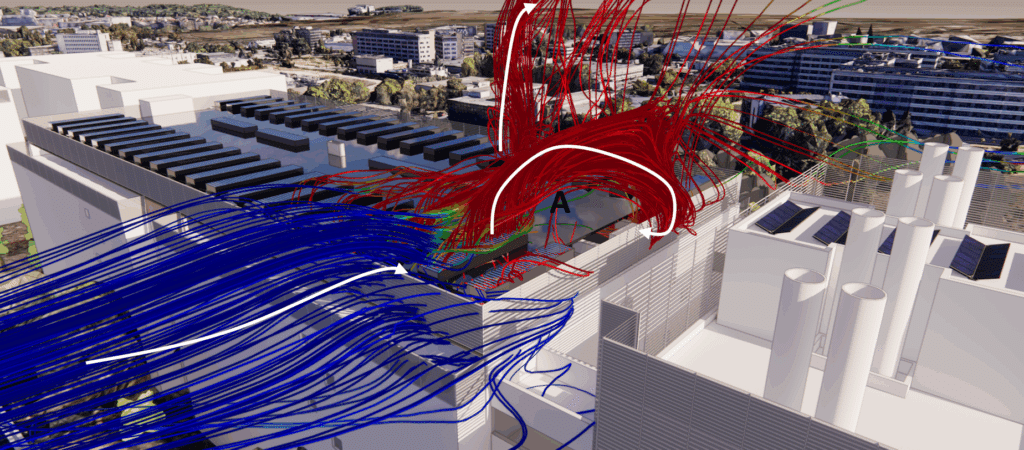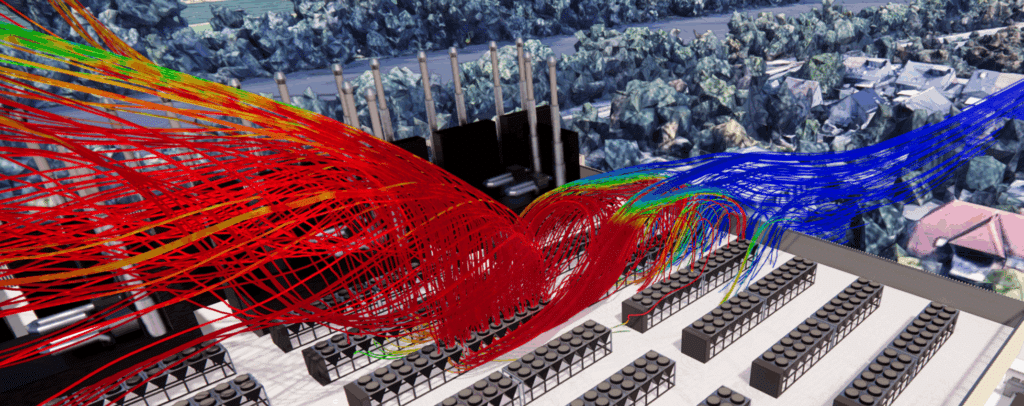External CFD simulation for data center
Home » Data Center » External CFD simulation for data center
External CFD simulation for data centers
EOLIOS is an expert in heat dissipation for data centers
- Study of thermal plumes
- Validation of maximum air temperature at equipment inlet
- Selection of equipment adapted to climatic conditions
- Study of critical failure scenarios
- Identification of bypass and recirculation air flows
- Generator impact study
- Energy optimization
- Validation of installation layout
- Optimizing placement and control of air handling systems
- Tailor-made solutions
EOLIOS is a leader in external CFD simulation for Data Centers. Our studies are based on feedback from measurement campaigns in real-life conditions and a hundred or so simulated sites around the world.
Why run an external CFD simulation of a data center?
A detailed model that adapts to different scenarios
We create a detailed computer model including surrounding buildings, all cooling devices on data center roofs, all exhausts, fresh air intakes and details such as windscreens, louvers and roofs…
We then use this model to study airflow, temperature distribution and water vapor (relative humidity) in several scenarios. These scenarios vary depending on the operational mode (normal, maintenance, emergency) and the weather conditions (high or low temperature, wind speed and direction).
Study heat dissipation on data center roofs
Whether in the courtyard or on the roof, mechanical heat rejection systems such as cooling towers and DRYs share space with emergency generators. A compact, high-density layout of server racks inside the building translates into a compact layout of outdoor equipment. This poses major challenges in terms of managing air flows outside the building.
External CFD studies are used to complete the risk assessment, optimize the design and reduce the energy consumption of the data center.
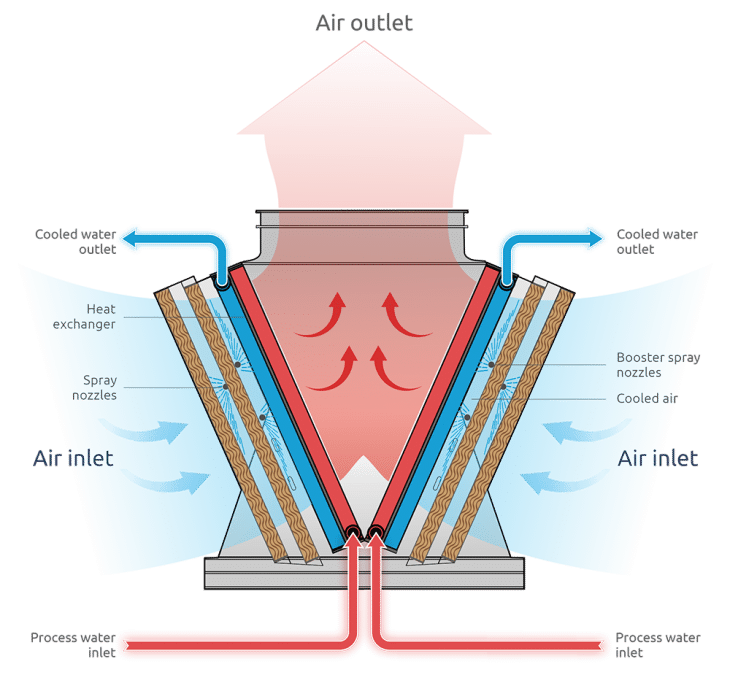
Schematic diagram of an adiabatic air cooler.
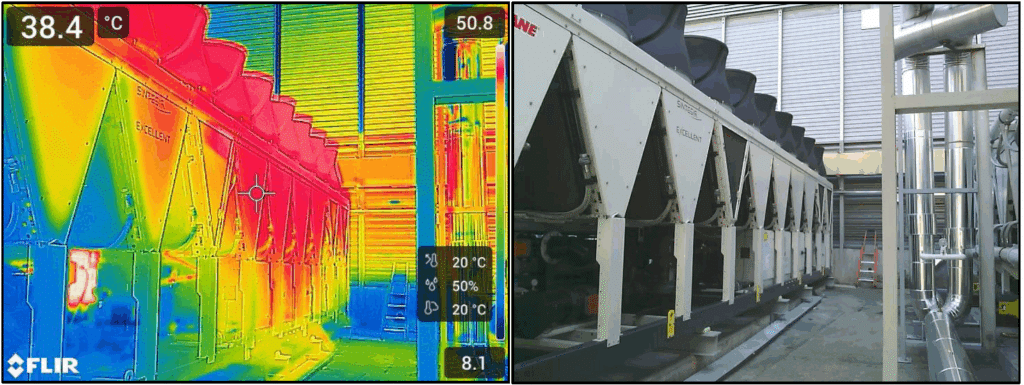
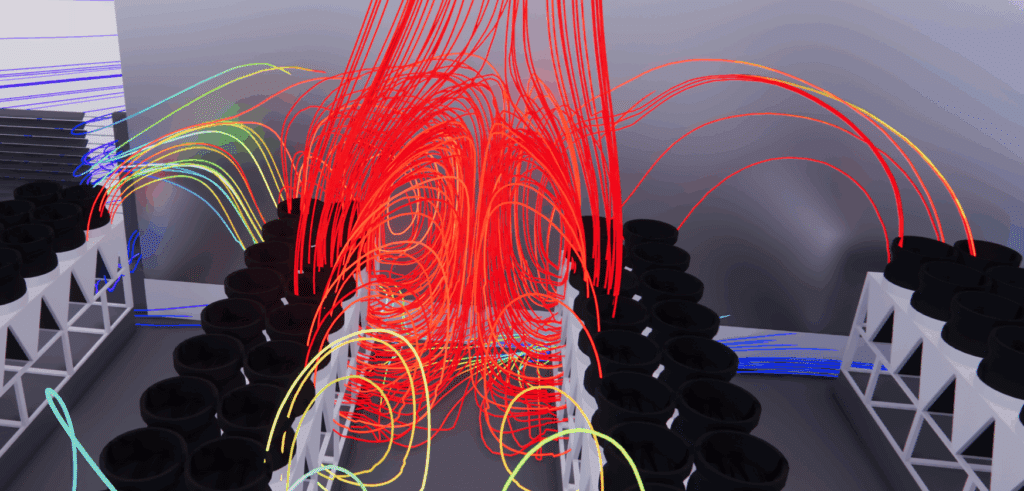
Example of identification of hot spots linked to thermal recirculation between air coolers
The influence of wind and weather on data center performance
The impact of thermal plumes outside the building is difficult to predict due to the various variables that design engineers and architects are unable to control. These variables include wind speed, air temperature and humidity, wind direction and other activities surrounding the building. However, these phenomena have an impact on the performance of equipment positioned outdoors.
EOLIOS can help you study the impact of these issues to ensure optimal operation in all circumstances, even the most extreme.
Studying data centers in extreme conditions
Design validation under extreme conditions
These simulations provide results that aid data center owners and designers in the decision-making process by determining cost-effective layouts and performance. CFD analysis, when carried out before the design is finalized and implemented, helps tomitigate the risks associated with design errors, which can lead to the need for major and costly modifications, construction delays or even loss of computing capacity in the event of a critical failure during a heatwave.
"Is your data center protected against the failure of its climate systems during a heatwave? "
Defining power losses under extreme conditions
The pooling of systems, the superimposition of server halls, and the continuous increase in power of server racks all lead to extremely high dissipation of heat from the roof. As the dissipation surface is constrained by the size of the building, the result is a very high concentration of air-conditioning systems on the roof, leading to a high risk of power loss, and even cascading system failures during extreme climatic events.
In very hot weather, or in the event of a power cut at the site, plumes of overheated air generated by the cooling systems can lead to a sharp drop in cooling power, or even a cascading shutdown of the roof systems, resulting in a site-wide fault.
Outdoor CFD studies for data centers enable us tostudy the risks of power loss andoptimize the layout of rooftop cooling systems.
Systems suitable up to a certain temperature level
Most manufacturer’s equipment documents provide minimum clearance requirements for air-conditioning equipment typically positioned on the roof. Although this information is provided for guidance only, designers are expected to take these parameters into account when laying out machines.
The manufacturer’s recommendations on equipment installation are generally included: minimum distance between systems, maximum operating temperature…
However, these guidelines do not take into account ambient air conditions, wind speed or the nearby built environment.
The figure below shows how adhering to the manufacturer’s recommended minimum distances can still result in undesirable performance.
CFD applications in the data center
Study of the interaction of rooftop air-conditioning systems in relation to wind conditions
The hot air exhausted through the chimney flues is composed of the generator fumes and the air superheated by the heat exchange batteries. These air flows are blown back into the building by the wind, causing heat to be recirculated via the roof systems.
As a result of these conditions, the ambient air temperature range at the inlet to the mechanical air-conditioning equipment may fall outside the manufacturer’s recommended operating range. These phenomena can lead to a loss of power or even the shutdown of certain equipment.
CFD analysis allows us to understand how several systems will interact with each other. The video below shows the impact of exhaust air (thermal plume) from generators in relation to rooftop air-conditioning equipment.
Study of pollutant emissions - Nox from generators
At the same time, it is possible to check that smoke emissions (Nox) from generators are not taken up by roof-mounted AHUs, which would pollute the air in the offices.
CFD simulation for the interior of your data centers
Indoor CFD modeling is generally used at the design stage for plant sizing analysis. Computer simulation provides information on the relationship between the operation of air conditioning systems and changes in the thermal load of computer equipment. With this information, IT and site personnel can optimize airflow efficiency, remove hot spots and maximize cooling capacity.
CFD simulation to study heat islands induced by data centers
Data centers are a major source of heat in urban environments, helping to accentuate theheat island effect. Their thermal discharges can influence local temperatures, impact outdoor comfort and affect air quality. CFD simulation is used to characterize the dispersion of heat plumes, taking into account equipment configuration, urban morphology, surrounding materials and actual weather conditions.
These analyses also incorporate seasonal and hourly variability, showing that certain contexts, such as heatwaves or windless nights, are particularly critical. The results are used to compare different mitigation strategies, whether in terms of equipment layout, the addition of flow-guiding devices, plant screens or technical solutions such as variable-speed air coolers. Depending on the configuration, these measures can reduce the local thermal impact. Last but not least, simulations facilitate theintegration of data centers into urban and environmental policies, by providing objective elements for planning, regulations and consultation with local residents.
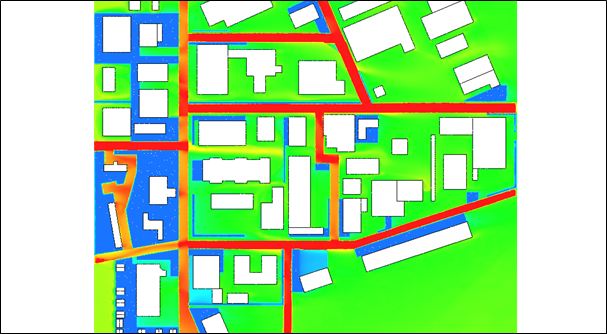
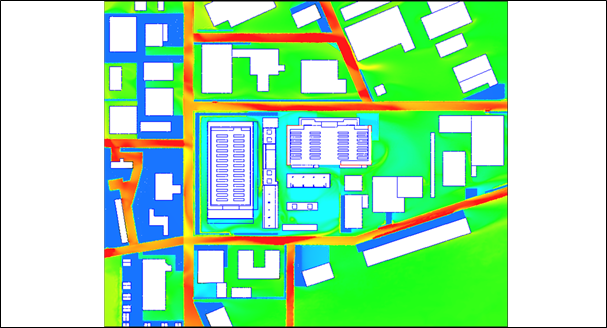
Mapping temperatures at 1 m above ground before and after data center installation
Are you designing or operating a data center?
Controlling air and heat flows is essential to guarantee the reliability of your infrastructures, avoid power losses and secure your investments in the face of extreme climatic conditions.
Thanks to CFD simulation, our engineers can help you anticipate thermal risks, optimize the layout of your equipment and ensure uncompromising service continuity.
> Contact our engineers today and let’s discuss your project together to define the solution best suited to your needs.
Find out more:
Our specific solutions for data centers :

CFD engineering for data centers
Find out more
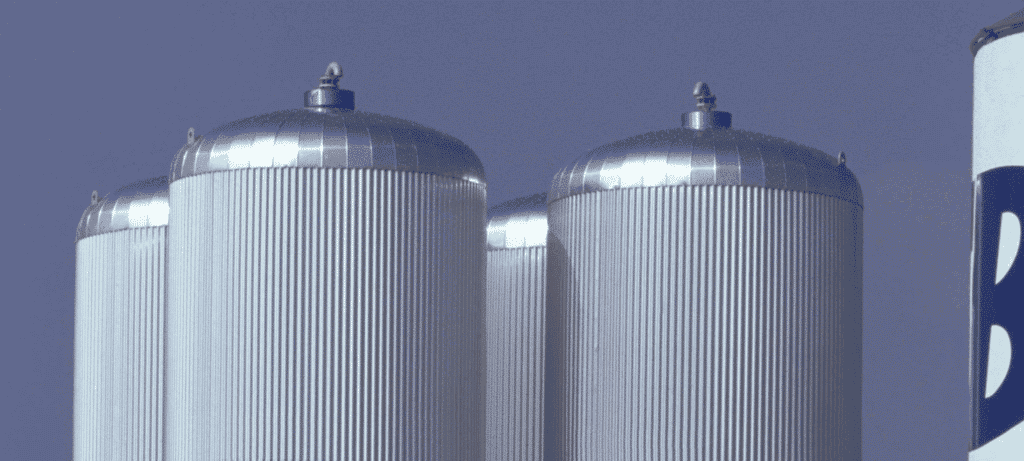
Thermal storage study
Find out more
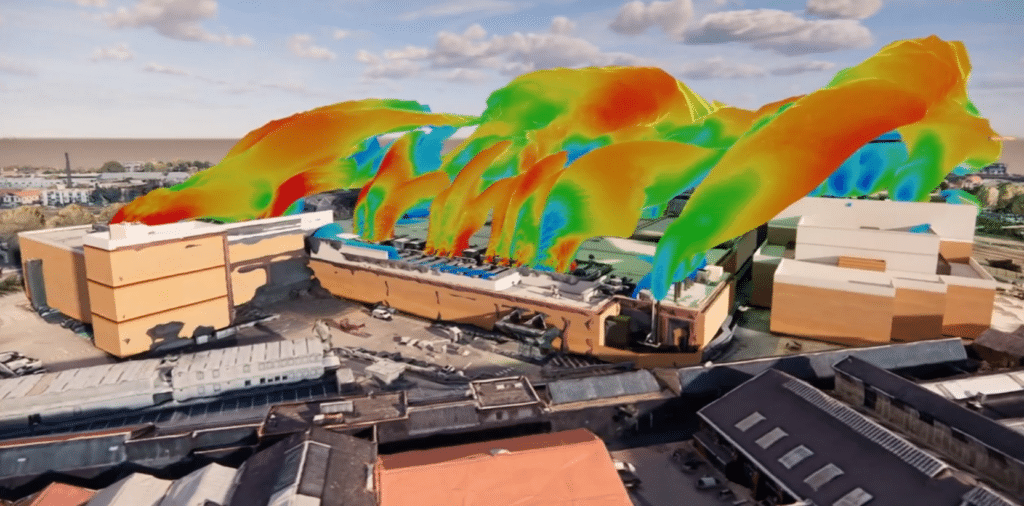
External CFD simulation for data center
Find out more
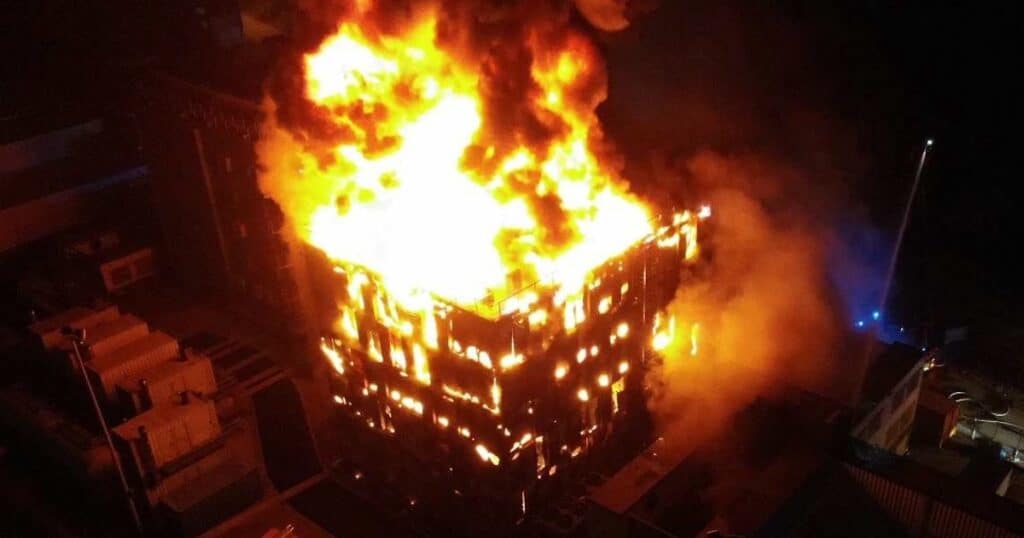
Data Center Fire Simulation
Find out more
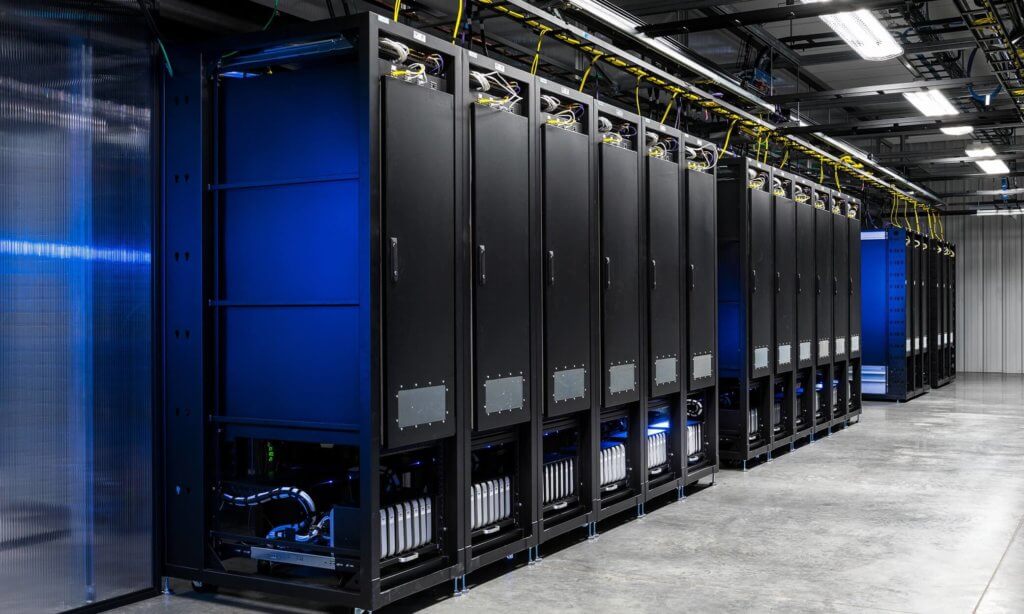
Thermal study of technical premises
Find out more
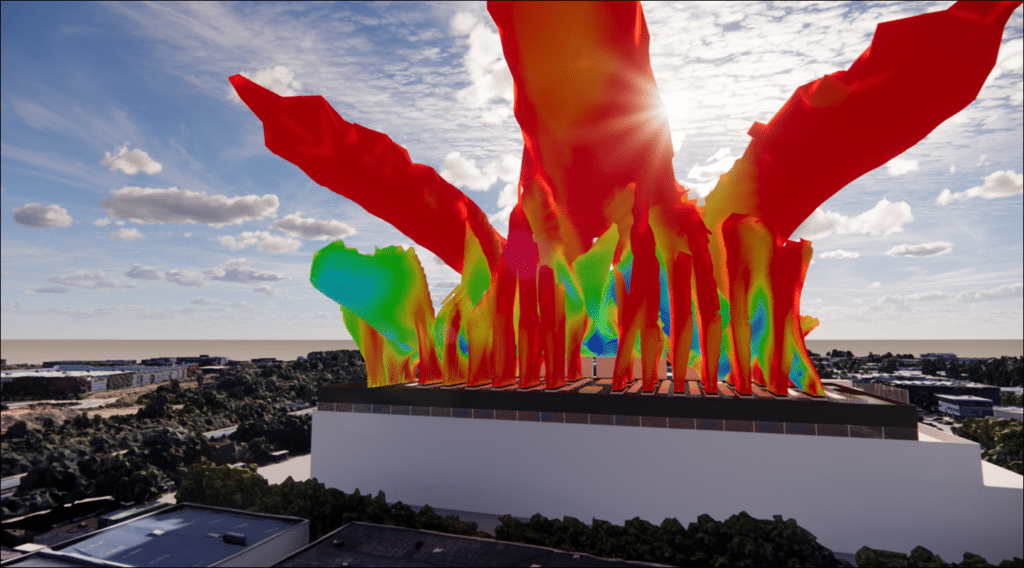
Urban heat island impact study for data centers
Find out more
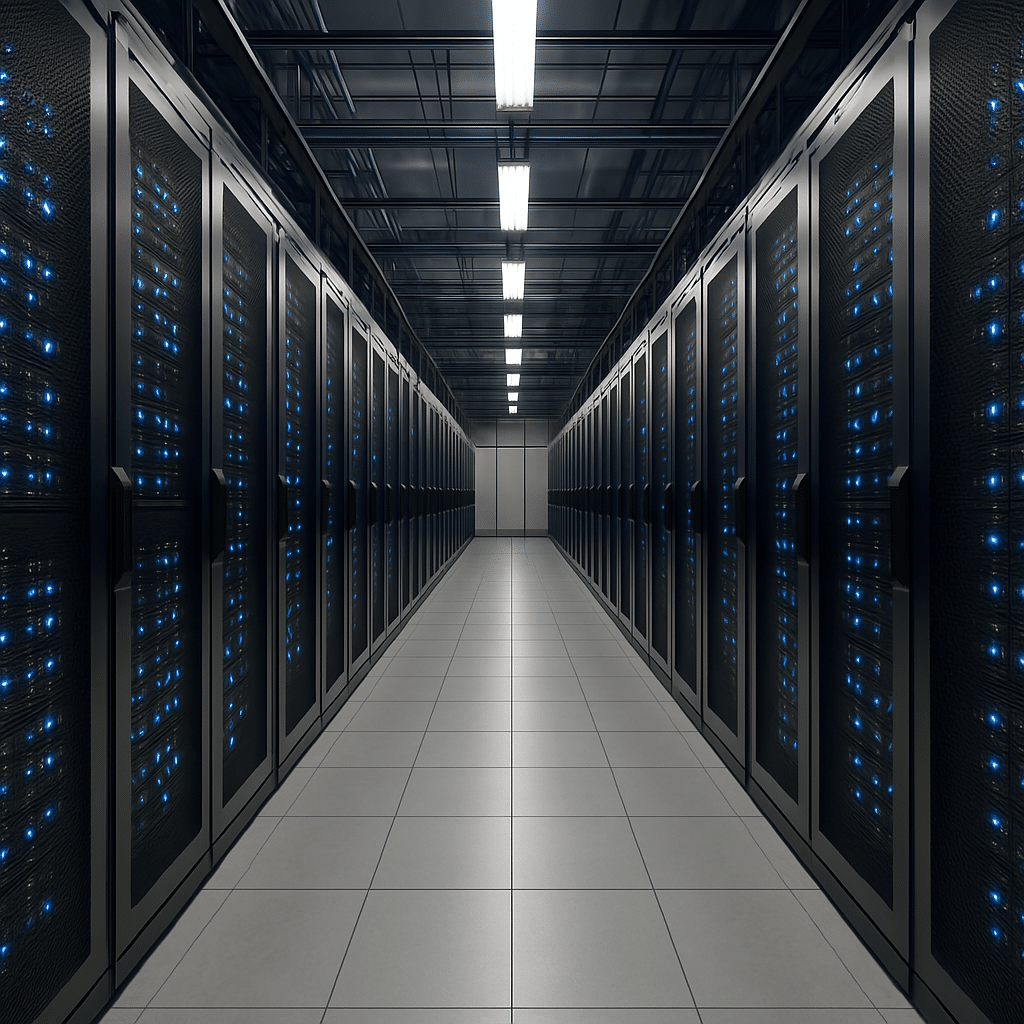
Audit, diagnosis and 3D modeling of existing data centers
Find out more
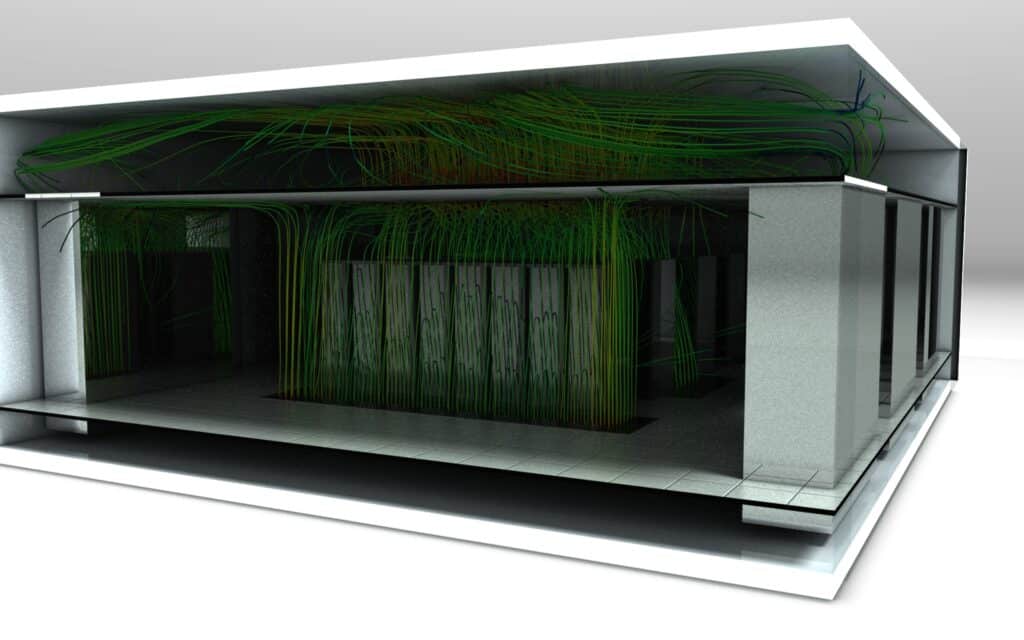
Designing your data center’s digital twin
Find out more
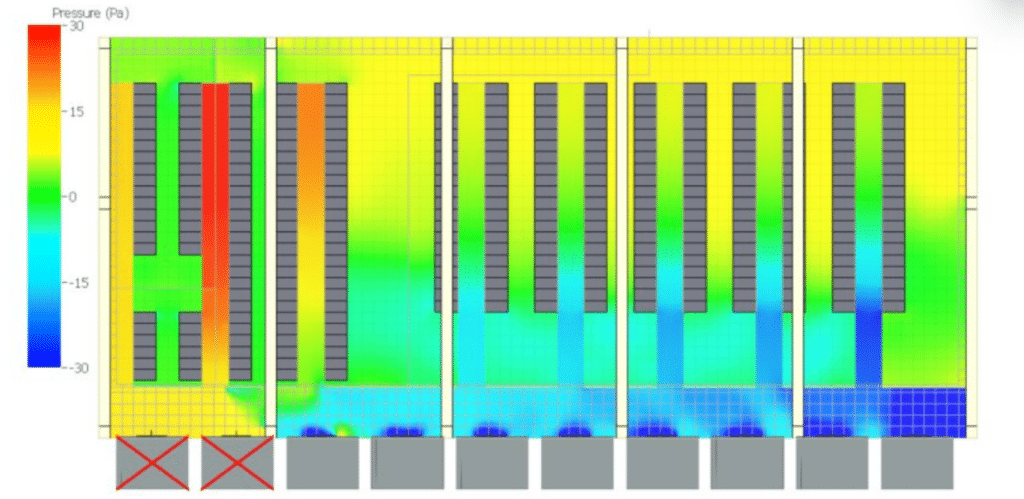
Energy optimization and PUE calculation for data centers
Find out more

Commissioning: study and CFD modeling of load benches
Find out more
Data center engineering
Initially created in France, EOLIOS Ingénierie is the benchmark thermal and aeraulic simulation consultancy for data centers in Europe and worldwide. The company supports operators, designers and project owners at every stage in the life of a data center: design, optimization, renovation or extension.
By combining cutting-edge scientific expertise, state-of-the-art simulation tools and in-depth knowledge of the data center ecosystem, EOLIOS Ingénierie is a trusted partner for ensuring the availability, security and energy performance of IT infrastructures, while anticipating sustainability issues.
EOLIOS
PARIS – LONDON – MILAN – MUNICH – MADRID – WARSAW – CASABLANCA – UNITED ARAB EMIRATES – USA

